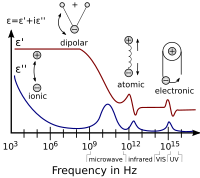Impedance spectroscopy

Have you ever put your hand in water and felt some resistance? That's kind of like what impedance is. It measures how much something resists the flow of something else. In the case of impedance spectroscopy, it measures how much a material resists the flow of electricity.
Imagine you have a toy car and you want to see how fast it can go. You would need to measure how much resistance there is against the wheels when they turn. The faster the wheels turn, the more resistance there is. This is kind of like what impedance spectroscopy does, but instead of toy cars, it measures the resistance in materials when electricity flows through them.
Scientists use impedance spectroscopy to study different materials like metals or plastics. They attach electrodes to the material, like little wires, and send a small electric current through it. Then they measure how much resistance there is against the flow of electricity.
The scientists can also change the frequency of the current to see how the material reacts to different frequencies. It's kind of like changing the speed of the toy car's wheels to see how much resistance there is at different speeds. By doing this, scientists can learn a lot about the material, like how it conducts electricity or how it reacts to different chemicals.
So in short, impedance spectroscopy measures how much a material resists the flow of electricity and scientists use it to learn about different materials.
Imagine you have a toy car and you want to see how fast it can go. You would need to measure how much resistance there is against the wheels when they turn. The faster the wheels turn, the more resistance there is. This is kind of like what impedance spectroscopy does, but instead of toy cars, it measures the resistance in materials when electricity flows through them.
Scientists use impedance spectroscopy to study different materials like metals or plastics. They attach electrodes to the material, like little wires, and send a small electric current through it. Then they measure how much resistance there is against the flow of electricity.
The scientists can also change the frequency of the current to see how the material reacts to different frequencies. It's kind of like changing the speed of the toy car's wheels to see how much resistance there is at different speeds. By doing this, scientists can learn a lot about the material, like how it conducts electricity or how it reacts to different chemicals.
So in short, impedance spectroscopy measures how much a material resists the flow of electricity and scientists use it to learn about different materials.
Related topics others have asked about:
